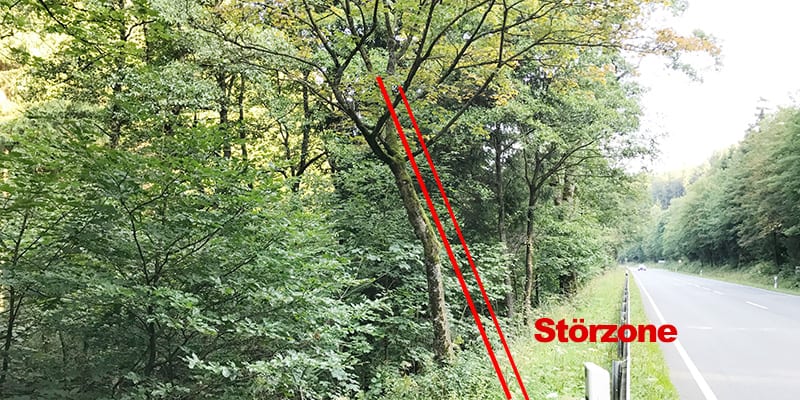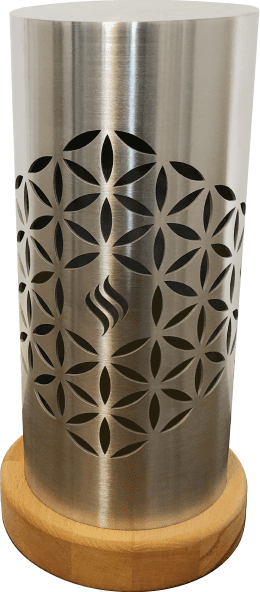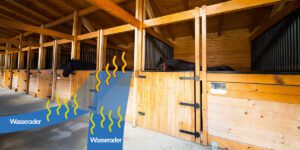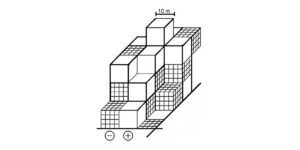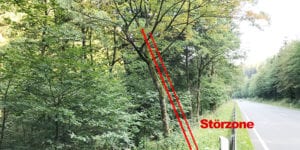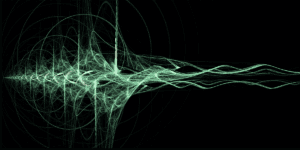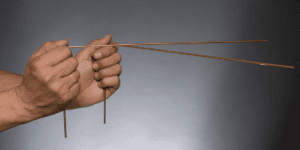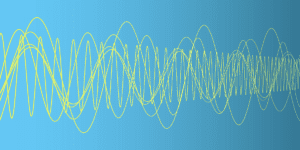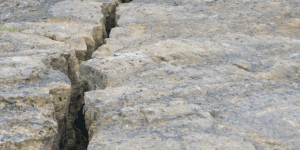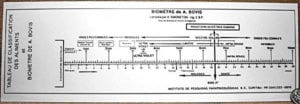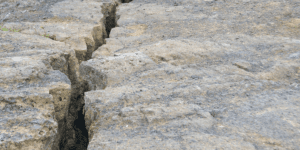At this point I would like to address the question, which arises again and again in practice, why water veins in different floors are not necessarily to be measured at the same place, and how it comes to that.
Vertically shifted … What does that mean exactly?
In some of my trainings I have learned that you basically only need to examine one floor of a house for earth rays and then transfer these results 1 to 1 to the floors above. But is that really the case? Unfortunately no. Because in my daily practice it has been shown again and again that disturbance zones, which were to be found e.g. in the first floor at a certain place, were or are to be measured in the floor above sometimes somewhat shifted – sometimes even quite strongly shifted, or more undifferentiated. But how can this be? Water veins should always remain in the same place, shouldn’t they?
When this happened to me the first few times, it was always very energy-consuming. Because, on the one hand, I naturally wanted to point out every interference zone as precisely as possible, but on the other hand, I had this external belief set in my head that an interference zone that had already been found on the lower floor had to be in the same place upstairs.
In addition, I was convinced that my customers also saw it that way. I therefore always regularly broke out in a sweat when the interference zones found in the individual storey levels did not coincide.
In addition, I must mention that during the first time I was only on the road with a dowsing rod, and it has therefore been all the more difficult to then explain the results found. Today I measure with the help of a bioresonance device, so that I can define the different frequency spectra of the individual interference zones very precisely.
Likewise, I can explain to my clients today, using examples from nature, how it can happen that I can measure the spectrum – or frequency – of one and the same water vein on different floors at different positions.
A question of frequency level
In order to understand how the spectrum of a water vein behaves, we must again make a small physical detour into the realm of frequencies.
As already described in more detail in other articles, the frequency spectrum of a water vein that we can feel consists of at least two components. On the one hand, there is an individual frequency spectrum, which, for example, distinguishes a water vein from a fault or another phenomenon.
These frequency spectra can be precisely distinguished, for example, with a bioresonance device (a spectrum is several individual frequencies which, taken together, produce a spectrum. Like e.g. the spectrum of visible light).
And secondly, there must be what I call a “carrier wave” that has the following properties:
- It vibrates extremely high – the frequency is about 10h45 Hertz.
- It is very short-waved – and thus passes virtually through everything unhindered.
- It behaves similarly to a laser beam – and therefore does not scatter
So any kind of earth radiation is a kind of frequency modulation, as we know it e.g. from a radio station.
The great fear in the search for a well
If one has to look for an optimal drilling point for a well with the dowsing rod, a basic problem arises again and again. Namely, it can happen that you get the rash for a water vein at a certain point – but the real course of the vein is a little further to the left or right.
This can happen when you mentally tune into the frequency of the water or the water vein, rather than the geological “bank” of the vein.
If, for example, a cavern has formed above the vein, or a quartz vein is running, it is possible that the total spectrum of the water vein – including the carrier wave – is diverted by geological, technical or other circumstances, and no longer radiates straight upwards.
So it can happen – and it does quite often – that the irritation zone of a water vein is not directly above the actual vein.
Do fields always have to build up in a cone shape?
According to physical science, fields always build up in a cone shape. This would mean in this case that above the cavern or discharging disturbance, the spectrum of the water vein should radiate broadly to all sides.
But it does not!
However, if you compare the total spectrum of a water vein with a laser beam, which, unlike a light bulb, also does not scatter but runs in a very straight line, this explains itself – and thus also the topic of this article.
For example, if we take a small pocket laser and place it vertically on the floor, it will beam upward at a 90° angle. However, if we place it on a slightly slanted surface, its beam will also be slightly slanted. According to the angle of the base.
And in my opinion it is exactly the same with a water vein. Because if the highly radiating spectrum of a vein is slightly diverted by some circumstance, it is very likely that this then no longer radiates straight up, but slightly offset – or oblique. The result is then an interference zone, which shifts vertically continuously.
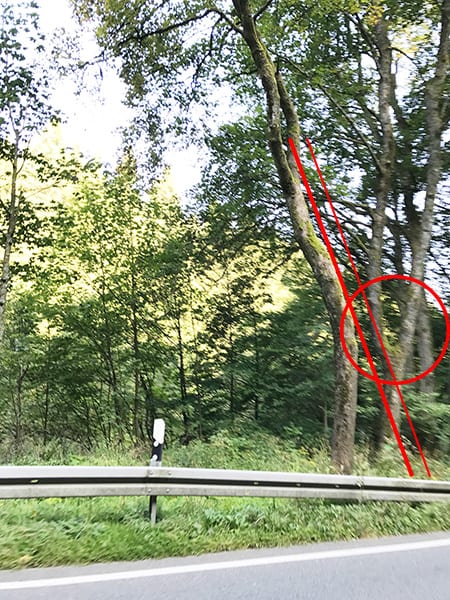
In nature, this can be observed very well in trees that first grow straight – and then from a certain height – start to avoid the disturbance zone. This can be clearly seen in the upper picture on the page.
In the second picture you can see the whole thing from another perspective. You can see the first tree there, how it starts to avoid the disturbance zone from about 2m height. In the background (in the red circle) you can see another tree, which is twisted from the same height. It, too, reacts to the diagonally running spectrum of the water vein at this point.
Another sign that the trees are affected by a water vein is the strong moss in the area of the disturbance.
By the way, a similar phenomenon can be found with global grids. Although these are not earth rays – i.e. coming from the earth – but magnetic grid systems, the lines as well as the crossing points, respectively the corresponding frequency spectra are also often derived.
Thus, it is not uncommon that an intersection point of the Curry grid has to be measured somewhat offset in different floors of a house. It is therefore not possible to examine one floor of a house and transfer the results to the remaining floors, but must measure individually on each floor.

